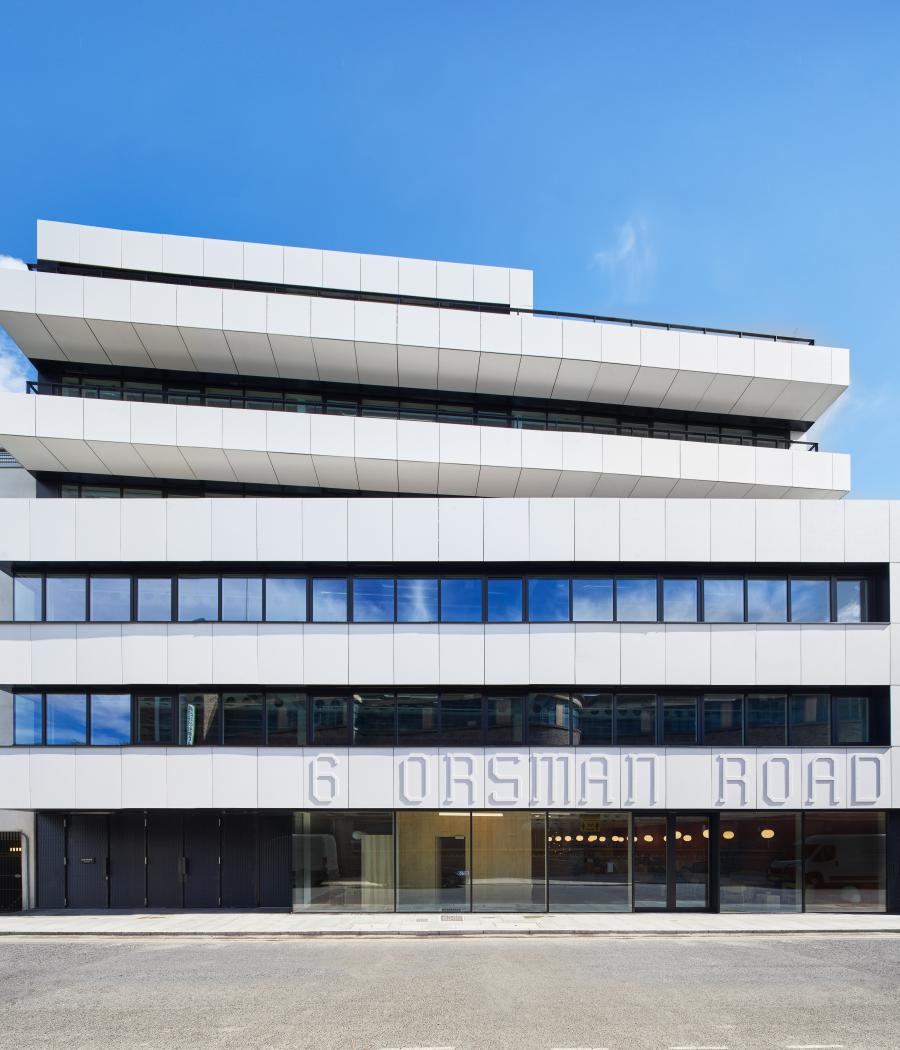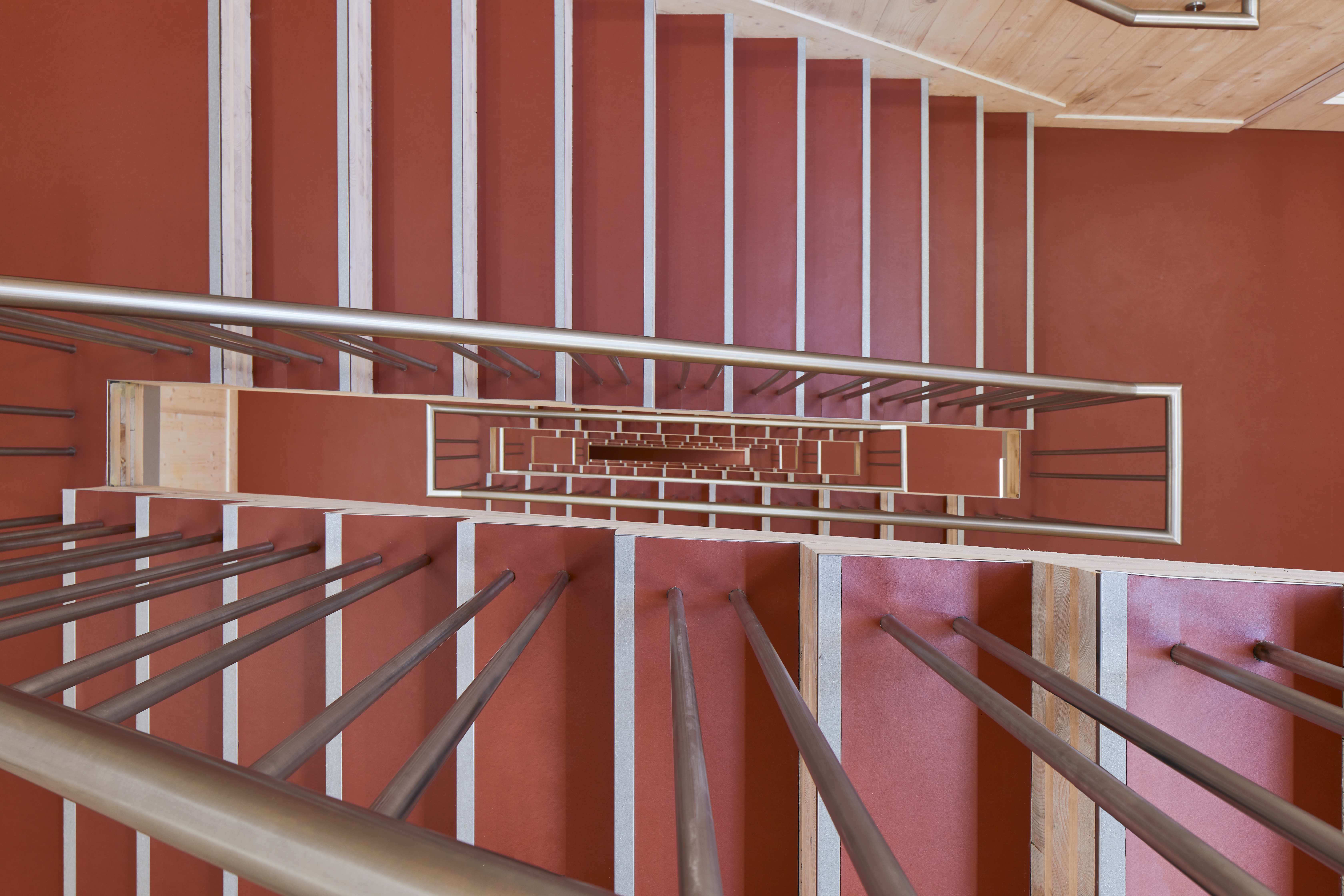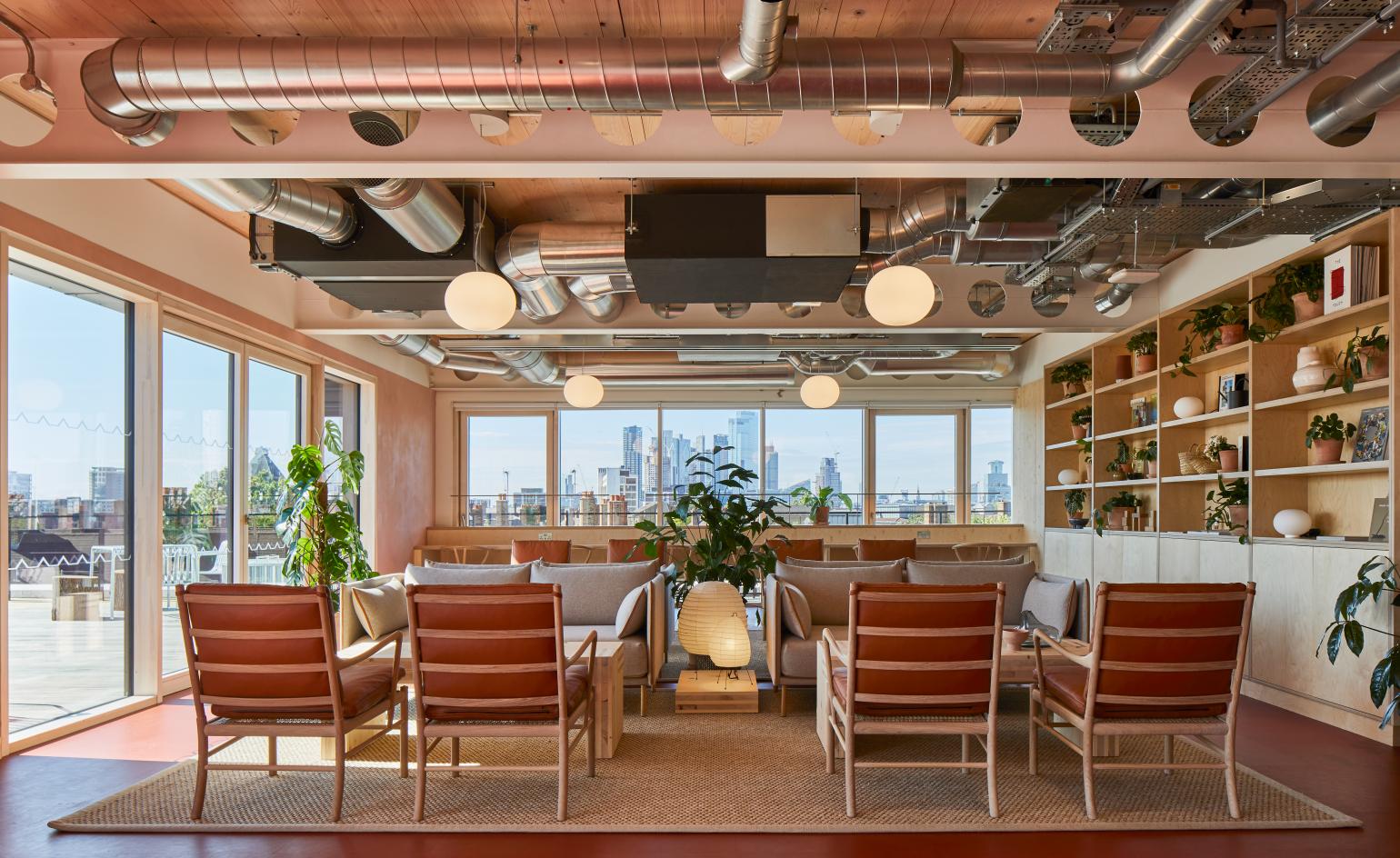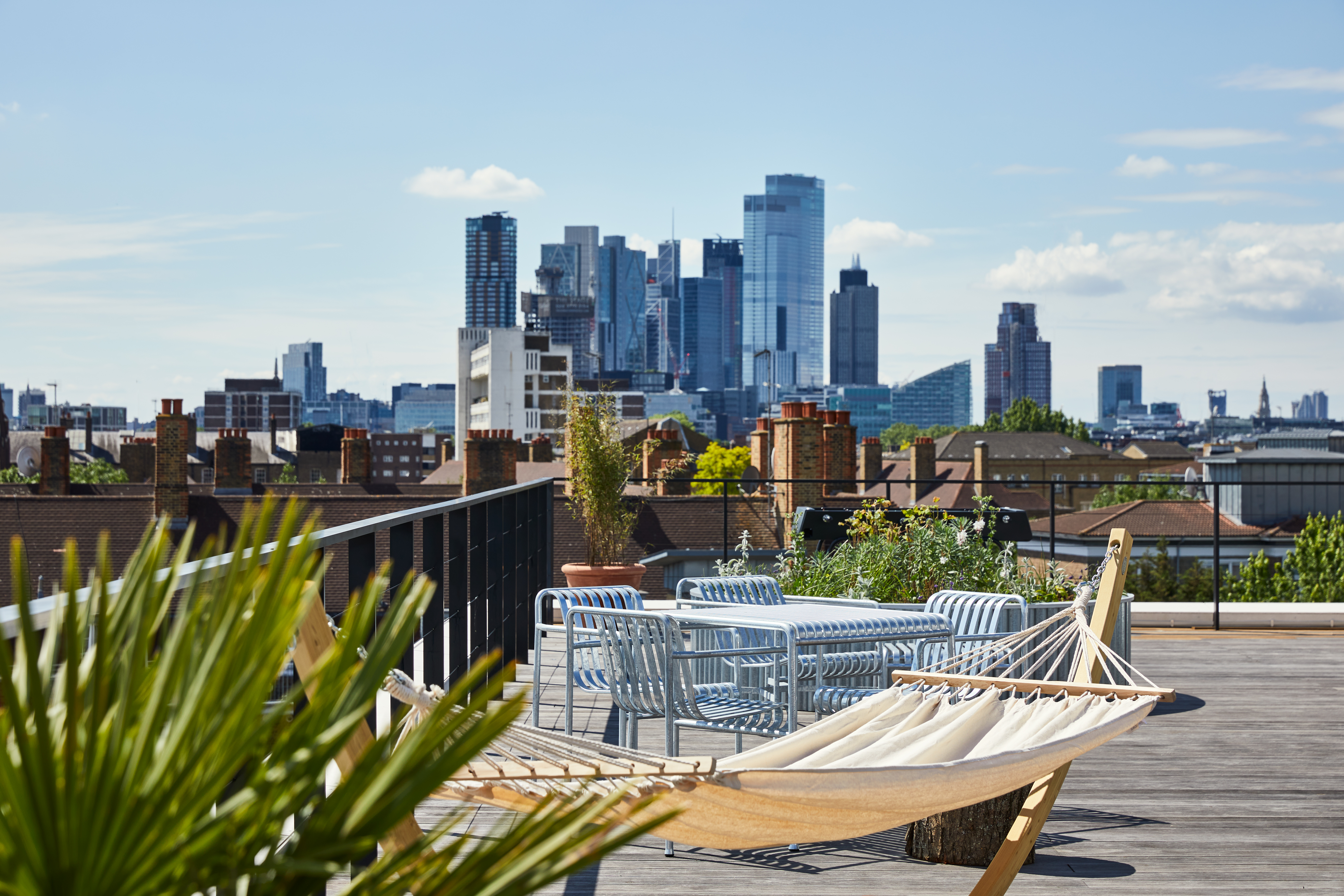Waugh Thistleton's new London office champions wellbeing
6 Orsman Road, a new office building in east London by Waugh Thistleton, combines flexibility, sustainability and wellbeing in creating a modern workspace to stand the test of time
Ed Reeve - Photography

As restrictions worldwide are starting to lift and life appears to be moving towards relative normality, architects know that change is needed in order for daily activity to safely resume; and workspace is a key area to address in a post-pandemic world.
London based architecture firm Waugh Thistleton's recently completed office project, designed at 6 Orsman Road in East London for Storey, developer British Land’s answer to flexible private workspace, is located on the banks of Regent's Canal in Haggerston, a stone's throw from the creative and tech hubs of Shoreditch and Old Street. Flexibility and sustainability in form and function were central to its entire concept, and it is what makes this project a relevant response to current needs.
‘6 Orsman Road represents a new way of building for the future, both because of its innovative design and adaptable layout,' says founder and director Andrew Waugh. ‘Built using a CLT-steel hybrid structure the whole building can ultimately be demounted and repurposed. The light weight timber floor slab requires a minimum amount of internal columns and no internal support walls, meaning that the building is flexible in plan and section – the floor can be easily removed to create double height spaces and additional stair wells. Demountable partitions and localised M&E has been used throughout, meaning that office spaces can be reconfigured as companies needs evolve and change, particularly poignant under the current circumstances.'

Additionally, true to the architecture studio's commitment to thoughtful and sustainable design, the building also uses environmentally friendly materials, putting the users' and planet's wellbeing at the forefront. The building's structure is made of a cross-laminated timber (CLT) structure, in order to reduce the overall building's carbon footprint, as opposed to using, for example, concrete or steel. Photovoltaic panels on the roof offer a renewable energy source, while the rest of the roof becomes a garden filled with edible plants, fruit trees, and even insect boxes.
RELATED STORY

The interior environment has been given just as much consideration. The architects have left the timber exposed wherever possible, wrapping workspace in natural materials, such as clay, marmoleum and air-purifying plants. This approach work better in terms of acoustics, as the project's specialist engineers, acousticians Sandy Brown, confirm. It seems also that natural surfaces, such as wood, might work better in slowing down virus transmission.
‘When designing workspaces we feel, in addition to ensuring they are flexible, it is important to ensure that they promote a sense of wellbeing,' Waugh continues. ‘At 6 Orsman Road natural materials, great daylight, natural ventilation and loads of plants everywhere come together to create a lovely working environment, that simultaneously boosts productivity. Everything from the exposed timber to the waterside setting, has been designed to help the people inside to feel calm, focused and inspired.'




INFORMATION
waughthistleton.com; storey.co.uk
Receive our daily digest of inspiration, escapism and design stories from around the world direct to your inbox.
Ellie Stathaki is the Architecture & Environment Director at Wallpaper*. She trained as an architect at the Aristotle University of Thessaloniki in Greece and studied architectural history at the Bartlett in London. Now an established journalist, she has been a member of the Wallpaper* team since 2006, visiting buildings across the globe and interviewing leading architects such as Tadao Ando and Rem Koolhaas. Ellie has also taken part in judging panels, moderated events, curated shows and contributed in books, such as The Contemporary House (Thames & Hudson, 2018), Glenn Sestig Architecture Diary (2020) and House London (2022).
-
 A compact Scottish home is a 'sunny place,' nestled into its thriving orchard setting
A compact Scottish home is a 'sunny place,' nestled into its thriving orchard settingGrianan (Gaelic for 'sunny place') is a single-storey Scottish home by Cameron Webster Architects set in rural Stirlingshire
-
 7 colours that will define 2026, from rich gold to glacier blue
7 colours that will define 2026, from rich gold to glacier blueThese moody hues, versatile neutrals and vivid shades will shape the new year, according to trend forecasters
-
 In Norway, discover 1000 years of Queer expression in Islamic Art
In Norway, discover 1000 years of Queer expression in Islamic Art'Deviant Ornaments' at the National Museum of Norway examines the far-reaching history of Queer art
-
 A compact Scottish home is a 'sunny place,' nestled into its thriving orchard setting
A compact Scottish home is a 'sunny place,' nestled into its thriving orchard settingGrianan (Gaelic for 'sunny place') is a single-storey Scottish home by Cameron Webster Architects set in rural Stirlingshire
-
 Porthmadog House mines the rich seam of Wales’ industrial past at the Dwyryd estuary
Porthmadog House mines the rich seam of Wales’ industrial past at the Dwyryd estuaryStröm Architects’ Porthmadog House, a slate and Corten steel seaside retreat in north Wales, reinterprets the area’s mining and ironworking heritage
-
 Arbour House is a north London home that lies low but punches high
Arbour House is a north London home that lies low but punches highArbour House by Andrei Saltykov is a low-lying Crouch End home with a striking roof structure that sets it apart
-
 A former agricultural building is transformed into a minimal rural home by Bindloss Dawes
A former agricultural building is transformed into a minimal rural home by Bindloss DawesZero-carbon design meets adaptive re-use in the Tractor Shed, a stripped-back house in a country village by Somerset architects Bindloss Dawes
-
 RIBA House of the Year 2025 is a ‘rare mixture of sensitivity and boldness’
RIBA House of the Year 2025 is a ‘rare mixture of sensitivity and boldness’Topping the list of seven shortlisted homes, Izat Arundell’s Hebridean self-build – named Caochan na Creige – is announced as the RIBA House of the Year 2025
-
 In addition to brutalist buildings, Alison Smithson designed some of the most creative Christmas cards we've seen
In addition to brutalist buildings, Alison Smithson designed some of the most creative Christmas cards we've seenThe architect’s collection of season’s greetings is on show at the Roca London Gallery, just in time for the holidays
-
 In South Wales, a remote coastal farmhouse flaunts its modern revamp, primed for hosting
In South Wales, a remote coastal farmhouse flaunts its modern revamp, primed for hostingA farmhouse perched on the Gower Peninsula, Delfyd Farm reveals its ground-floor refresh by architecture studio Rural Office, which created a cosy home with breathtaking views
-
 A revived public space in Aberdeen is named Scotland’s building of the year
A revived public space in Aberdeen is named Scotland’s building of the yearAberdeen's Union Terrace Gardens by Stallan-Brand Architecture + Design and LDA Design wins the 2025 Andrew Doolan Best Building in Scotland Award